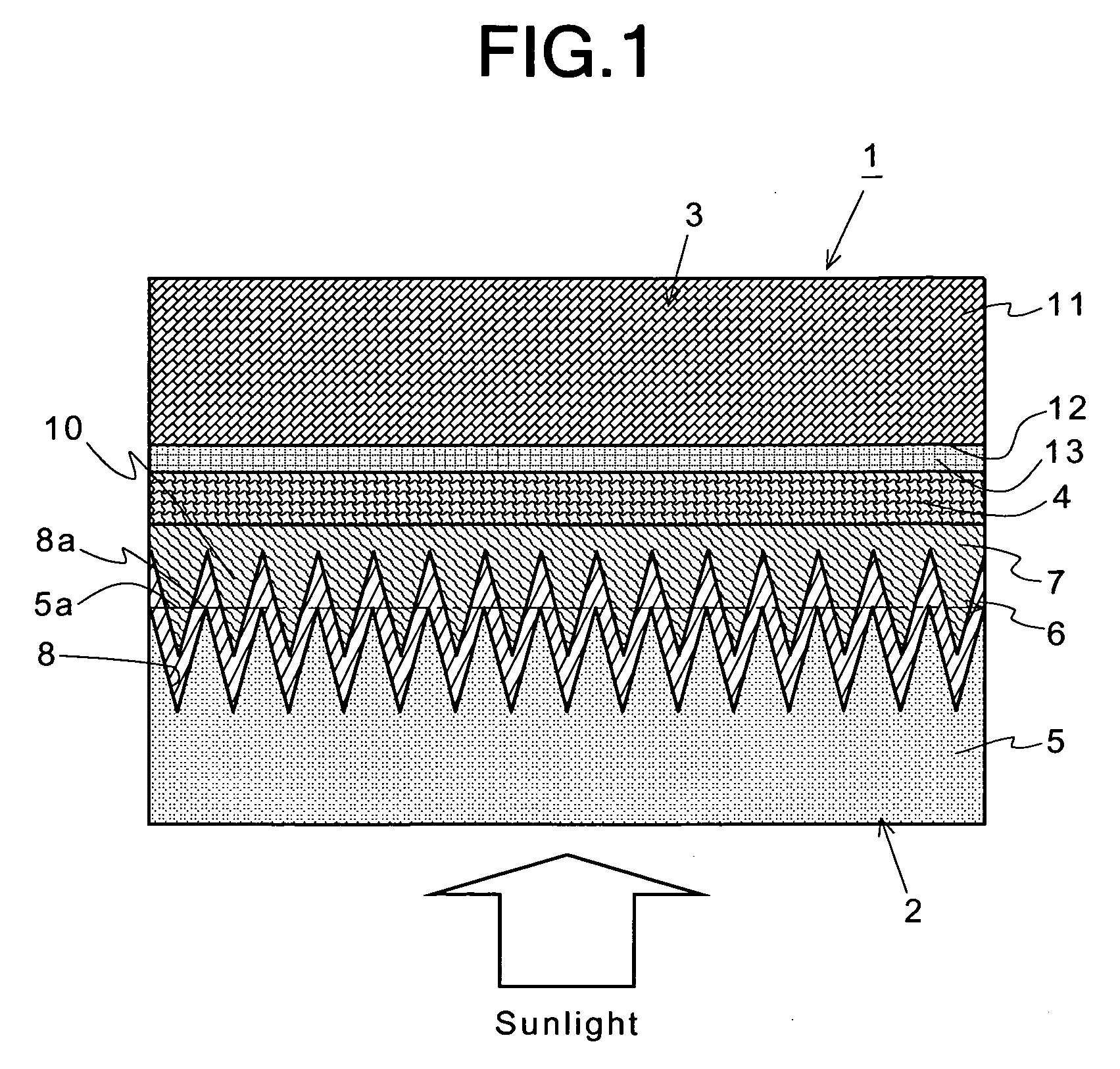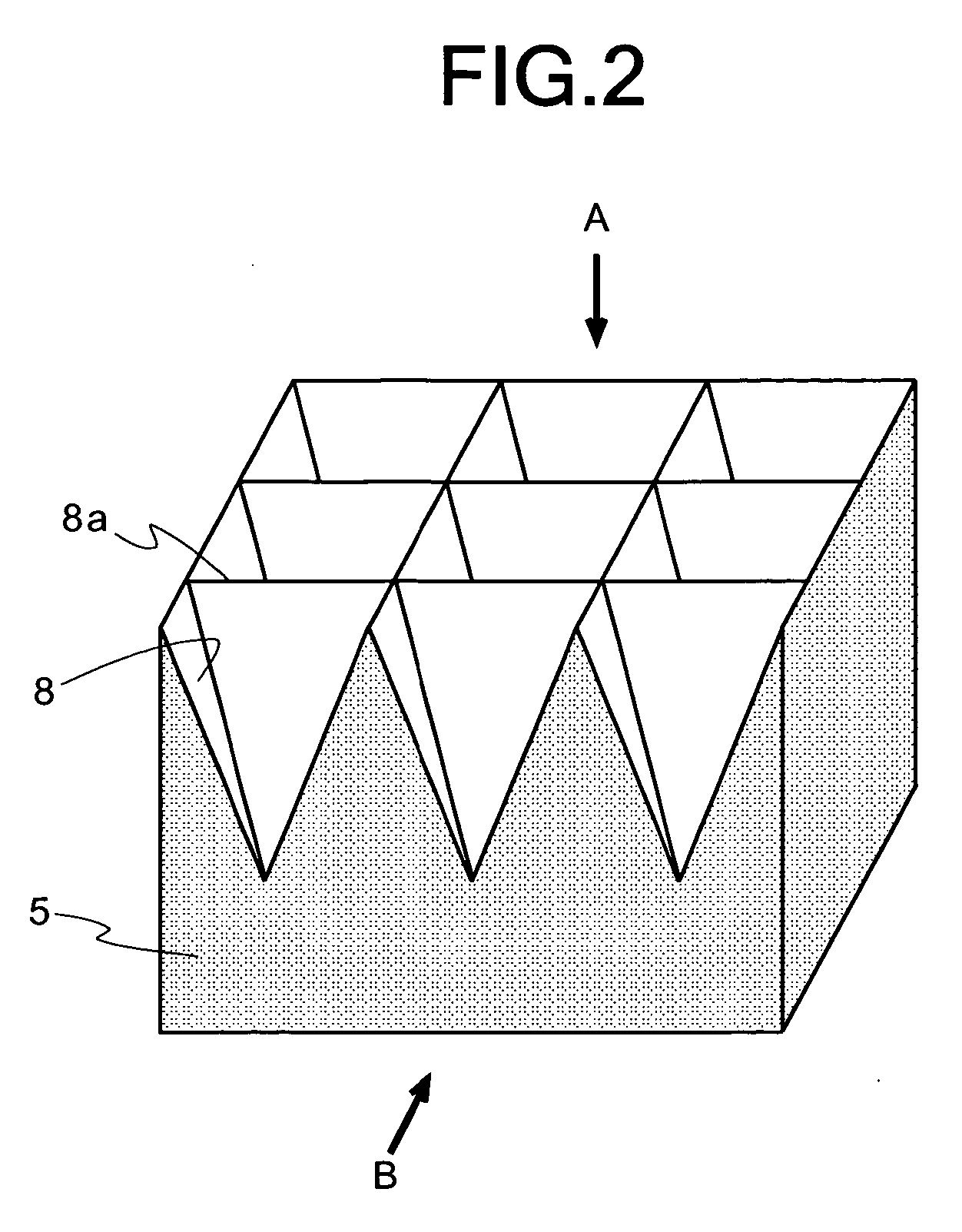Photoelectrode for dye sensitizing solar cell or organic solar cell, and dye sensitizing solar cell having same
a solar cell and photoelectric technology, applied in the direction of electrical devices, semiconductor devices, capacitors, etc., can solve the problems of low photoelectric transfer efficiency, deterioration of photoelectric transfer efficiency, and inability to use dye sensitizing solar cells in practical applications, so as to reduce the resistance to the movement of electrons, enhance the photoelectric transfer efficiency, and increase the light receiving area
- Summary
- Abstract
- Description
- Claims
- Application Information
AI Technical Summary
Benefits of technology
Problems solved by technology
Method used
Image
Examples
Embodiment Construction
[0042] Referring now to the accompanying drawings, the preferred embodiments of the present invention will be described below in detail.
[0043]FIG. 1 shows a preferred embodiment of a dye sensitizing solar cell 1 according to the present invention. As shown in FIG. 1, the dye sensitizing solar cell 1 in this preferred embodiment comprises a photoelectrode 2, a counter electrode 3, and an electrolyte 4 filled in a space therebetween.
[0044] The photoelectrode 2 comprises a transparent substrate member 5 (a light permeable substrate), a transparent electrode film 6 formed on the upper surface of the substrate member 5 in FIG. 1, a porous semiconductor electrode film 7 formed on the surface of the transparent electrode film 6, and a sensitizing dye absorbed and carried on the porous semiconductor electrode film 7.
[0045] The substrate member 5 may be made of a transparent resin material, such as acrylic resin, polyethylene terephthalate (PET), polyethylene naphthalene (PEN), polyolefin...
PUM
 Login to View More
Login to View More Abstract
Description
Claims
Application Information
 Login to View More
Login to View More - R&D
- Intellectual Property
- Life Sciences
- Materials
- Tech Scout
- Unparalleled Data Quality
- Higher Quality Content
- 60% Fewer Hallucinations
Browse by: Latest US Patents, China's latest patents, Technical Efficacy Thesaurus, Application Domain, Technology Topic, Popular Technical Reports.
© 2025 PatSnap. All rights reserved.Legal|Privacy policy|Modern Slavery Act Transparency Statement|Sitemap|About US| Contact US: help@patsnap.com



